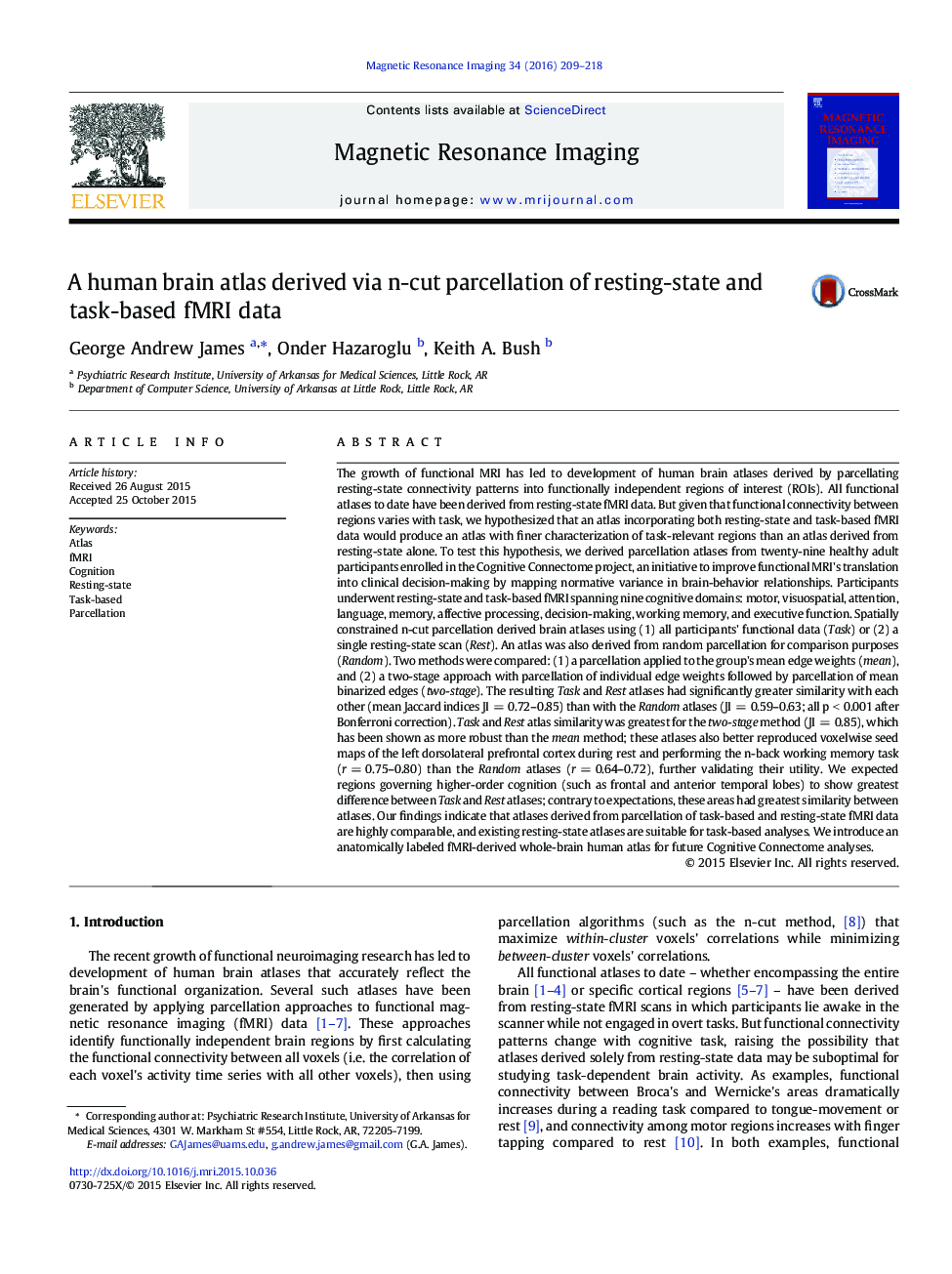| کد مقاله | کد نشریه | سال انتشار | مقاله انگلیسی | نسخه تمام متن |
|---|---|---|---|---|
| 1806222 | 1025190 | 2016 | 10 صفحه PDF | دانلود رایگان |

The growth of functional MRI has led to development of human brain atlases derived by parcellating resting-state connectivity patterns into functionally independent regions of interest (ROIs). All functional atlases to date have been derived from resting-state fMRI data. But given that functional connectivity between regions varies with task, we hypothesized that an atlas incorporating both resting-state and task-based fMRI data would produce an atlas with finer characterization of task-relevant regions than an atlas derived from resting-state alone. To test this hypothesis, we derived parcellation atlases from twenty-nine healthy adult participants enrolled in the Cognitive Connectome project, an initiative to improve functional MRI's translation into clinical decision-making by mapping normative variance in brain-behavior relationships. Participants underwent resting-state and task-based fMRI spanning nine cognitive domains: motor, visuospatial, attention, language, memory, affective processing, decision-making, working memory, and executive function. Spatially constrained n-cut parcellation derived brain atlases using (1) all participants' functional data (Task) or (2) a single resting-state scan (Rest). An atlas was also derived from random parcellation for comparison purposes (Random). Two methods were compared: (1) a parcellation applied to the group's mean edge weights (mean), and (2) a two-stage approach with parcellation of individual edge weights followed by parcellation of mean binarized edges (two-stage). The resulting Task and Rest atlases had significantly greater similarity with each other (mean Jaccard indices JI = 0.72–0.85) than with the Random atlases (JI = 0.59–0.63; all p < 0.001 after Bonferroni correction). Task and Rest atlas similarity was greatest for the two-stage method (JI = 0.85), which has been shown as more robust than the mean method; these atlases also better reproduced voxelwise seed maps of the left dorsolateral prefrontal cortex during rest and performing the n-back working memory task (r = 0.75–0.80) than the Random atlases (r = 0.64–0.72), further validating their utility. We expected regions governing higher-order cognition (such as frontal and anterior temporal lobes) to show greatest difference between Task and Rest atlases; contrary to expectations, these areas had greatest similarity between atlases. Our findings indicate that atlases derived from parcellation of task-based and resting-state fMRI data are highly comparable, and existing resting-state atlases are suitable for task-based analyses. We introduce an anatomically labeled fMRI-derived whole-brain human atlas for future Cognitive Connectome analyses.
Journal: Magnetic Resonance Imaging - Volume 34, Issue 2, February 2016, Pages 209–218